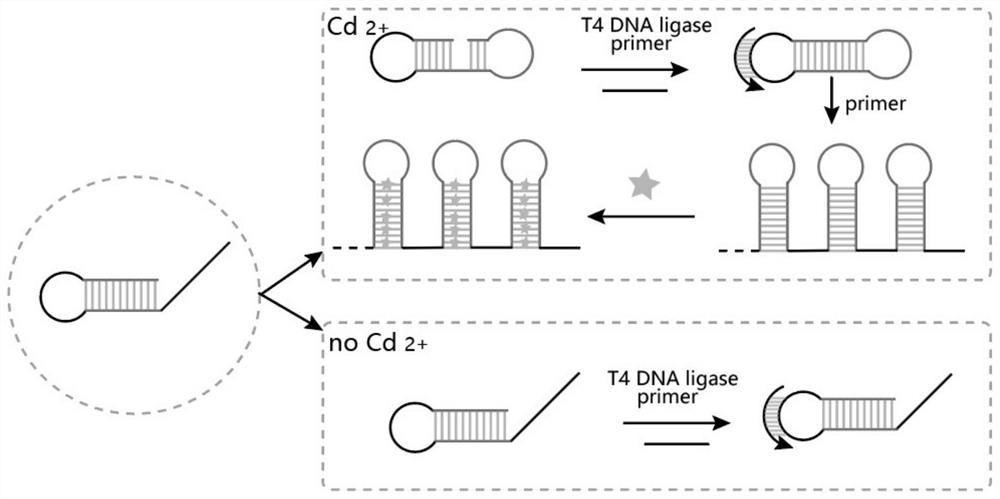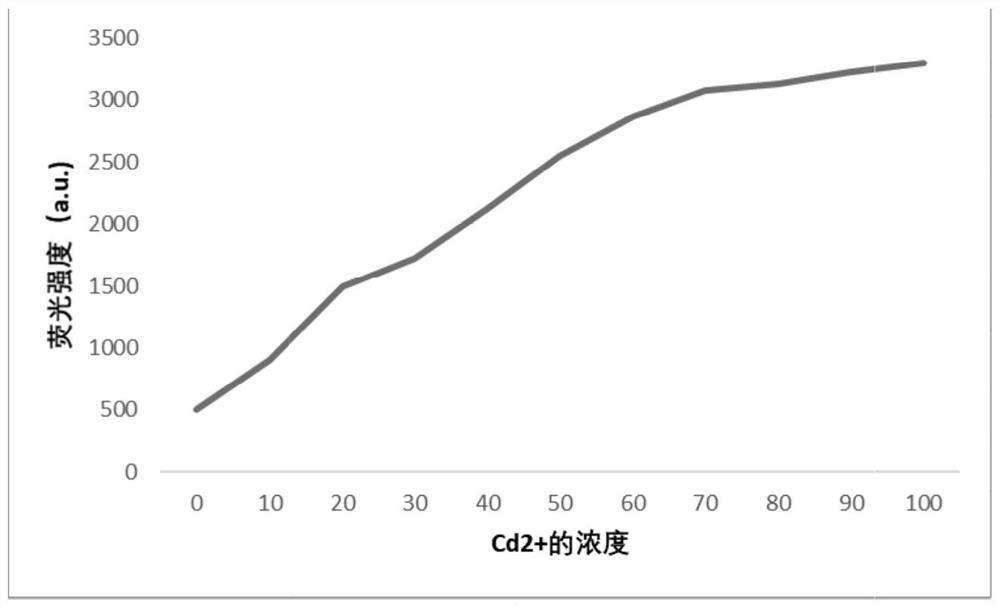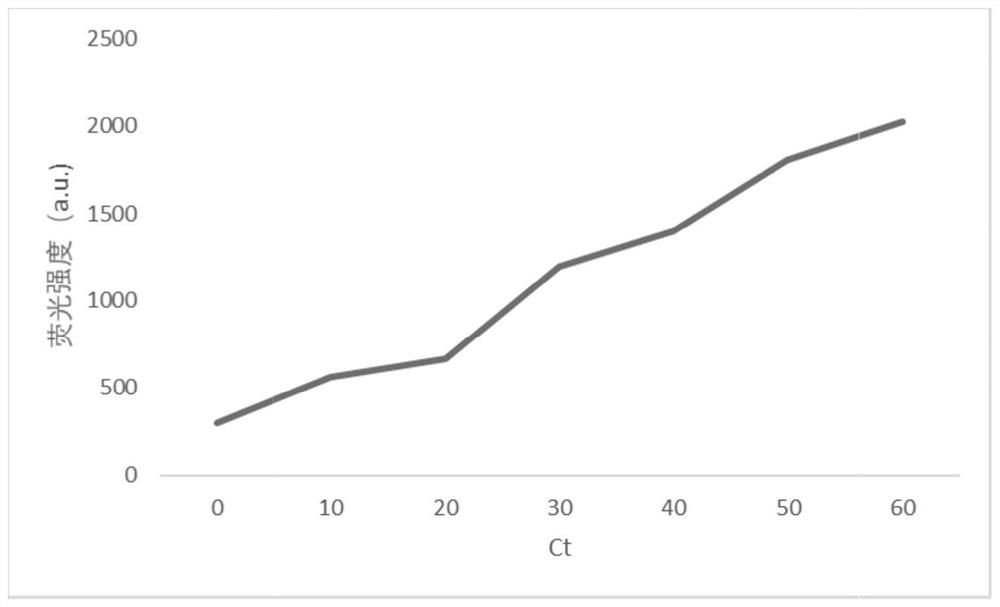Cadmium ion sensing method combining inducible allosteric probe with rolling circle amplification
A technology of rolling circle amplification and sensing method, which is applied in the field of cadmium ion sensing combined with inducible allosteric probes and rolling circle amplification, can solve the problems of time-consuming, cumbersome and the like, and achieves avoiding cumbersome, cost-effective, simple method effect
- Summary
- Abstract
- Description
- Claims
- Application Information
AI Technical Summary
Problems solved by technology
Method used
Image
Examples
Embodiment 1
[0031] 1) Take 3 μL of sample solutions containing cadmium ions at different concentrations and incubate with 3 μL of the probe sequence. Then 3 μL of primers were added and incubated for 10 min. Then, add the mixture to 10×T4 DNA ligation buffer (400 mM Tris-HCl, 100 mM MgCl) containing 1 μL of T4 DNA ligase 2 , 10 mM DTT, 5 mM ATP, pH 7.8), add 4.8 μL of DEPC water and incubate at room temperature for 10 min. Ligation products can be obtained in varying amounts.
[0032] Table 1 DNA sequence
[0033]
[0034] 2) Take 20 μL of the ligation product obtained in 1) and 4 μL of buffer 2 (50 mM Tris-HCl, 10 mM MgCl 2, 10mM (NH 4 ) 2 SO 4 , 4mM DTT, pH 7.5@25℃), 1μL of BSA (10mg / mL), 5μL of dNTP (10mM), 1μL of Phi29 DNA polymerase (10U / μL) and 9μL of DEPC water were mixed to make the whole reaction at 37 Incubate at ℃ for 2h. Finally, different amounts of DNA strands are obtained.
[0035] 3) The fluorescent dye SYBR Green I solution was diluted with 10 mM Tris-HCl 10 m...
Embodiment 2
[0037] Sensitivity experiment
[0038] Select sample solutions with cadmium ion concentrations of 0, 10, 20, 30, 40, 50, 60, 70, 80, 90, and 100ppb for verification, and the results are as follows figure 2 shown. It is determined that the detection linear range is 1-60ppb, and the detection limit reaches 0.08ppb.
Embodiment 3
[0040] The present invention is compared with the detection result based on Real-Time PCR
[0041] Since this method is based on the fluorescence of fluorescent dyes to detect the final fluorescence intensity, we used Real-Time PCR, the gold standard method for detection of fluorescence intensity, for verification experiments. Detect the sample of embodiment 2, Cd 2+ =50ppb, the result is as image 3 shown. Our method is more sensitive and time-saving than Real-Time PCR method.
PUM
 Login to View More
Login to View More Abstract
Description
Claims
Application Information
 Login to View More
Login to View More - R&D
- Intellectual Property
- Life Sciences
- Materials
- Tech Scout
- Unparalleled Data Quality
- Higher Quality Content
- 60% Fewer Hallucinations
Browse by: Latest US Patents, China's latest patents, Technical Efficacy Thesaurus, Application Domain, Technology Topic, Popular Technical Reports.
© 2025 PatSnap. All rights reserved.Legal|Privacy policy|Modern Slavery Act Transparency Statement|Sitemap|About US| Contact US: help@patsnap.com



